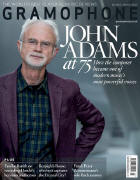Texte paru dans: / Appeared in: |
|
|
Outil de traduction |
|
|
Reviewer: Mark Seow Booklet notes by Tully Potter include what at first seems to be a detailed survey of the recorded history of the Sonatas and Partitas. Beginning with Henri Marteau, Potter goes through significant Bach recordings from Adolf Busch, through Yehudi Menuhin and Joseph Szigeti, to Arthur Grumiaux. Potter’s notes abruptly end there, as if nothing has happened in Bach performance since 1961 (or, at least, since 1977, when Grumiaux’s Gavotte en rondeau blasted off aboard the two Voyager spacecraft). There is no mention of the Historically Informed Performance movement, which has of course transformed the sound of Bach performance on and off gut. Its influence on Leonidas Kavakos is undeniable, and most clear in his deviations from Bach’s manuscript. The moto perpetuo sunshine that Kavakos chooses to open the first disc, the E major Prelude, has a lone ornament in bar 37. Tellingly, Kavakos uses exactly the same tripletised ornament in the antepenultimate bar of the Bourrée. Two stray ornaments in a space of 210 bars; there may as well have been none. This might seem a lot of fuss over nothing, and really, it is: these are lovely performances throughout the E major. There’s an excess of effortlessness. Kavakos controls large sweeping phrases, conscientiously shaded with hierarchy. I take issue only with the closing Gigue. Putting the barrage of unnecessary ornaments to one side, Bach’s harmonic pattern is far more interesting than Kavakos lets on. He glosses past F sharp minor like it’s just another high-street café. Weirdly, it is at this Gigue where the acoustic seems to change – or at least revert to the extreme resonance we had at the start of the disc. It takes some getting used to the acoustic of Berlin’s Church of the Holy Cross, which edges far too close to ‘bathroom’. The ears, of course, adapt, but here at the Gigue the acoustic emerges once more as a hindrance. As you might expect, there are some seriously gorgeous moments throughout – the breathy C major Adagio; the kickass D minor Corrente; the improvisatory swirls of the G minor Adagio, whose final chord is simultaneously superhuman yet frail – but the Partita in B minor is Kavakos at his best. His playing marries the dancing and singing that is at the heart of this music. The awkward mechanics of the Allemande are fashioned into a dramatic narrative, which opens out into brooding splendour for the Sarabande. And while the first Double dwells too much in nostalgia for my liking, the rest of the Partita is well characterised and balanced. |
|




